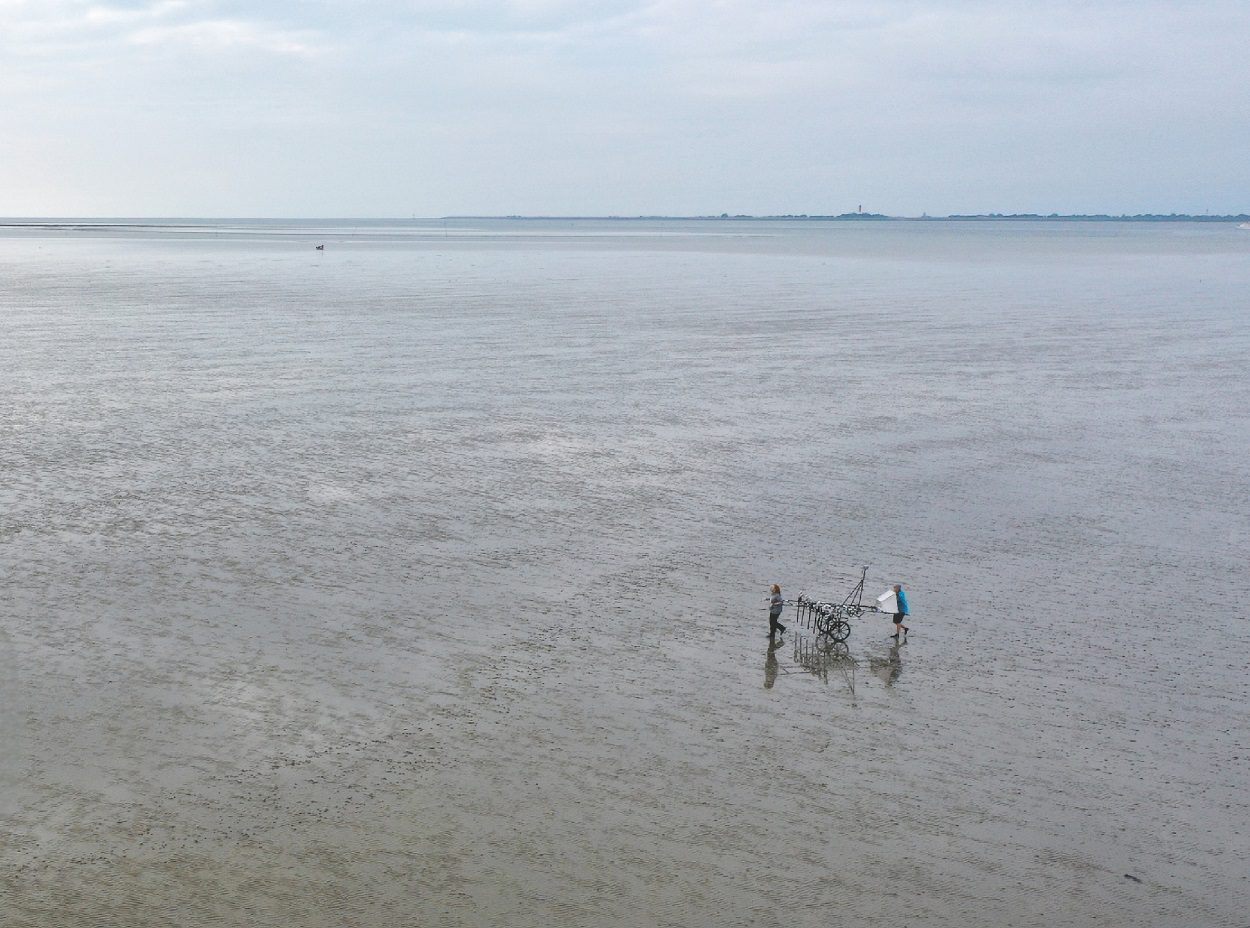A multi-institutional team of archaeologists have discovered the remains of a church from the submerged medieval settlement of Rungholt in the North Frisian Wadden Sea, Germany.
Rungholt reportedly sank beneath the waves when a storm tide (known as Grote Mandrenke or Den Store Manddrukning) struck the coast in January 1362.
Often known as the “Atlantis of the North Sea,” legend says that Rungholt was a prosperous and expansive town, said to have suffered a catastrophic fate as a divine retribution for the transgressions committed by its inhabitants.
Researchers from Kiel University (CAU), Johannes Gutenberg University Mainz (JGU), the Centre for Baltic and Scandinavian Archaeology (ZBSA), and the State Archaeology Department Schleswig-Holstein (ALSH), have located the site of a large church using a combination of geoscientific and archaeological methods, such as magnetic gradiometry, electromagnetic induction, and seismics.
The team found a two-kilometre-long chain of medieval terps (settlement mounds), recorded by using geophysical prospection near Hallig Südfall. Among these terps are unmistakable structures that can be identified as the base of a church measuring 40 metres by 15 metres.
Dr Ruth Blankenfeldt, archaeologist at ZBSA, said: “The special feature of the find lies in the significance of the church as the centre of a settlement structure, which in its size must be interpreted as a parish with superordinate function.”
Surveys of the wider region spanning an area over ten square kilometres have also revealed 54 terps, well-organised drainage systems, a coastal dike featuring a tidal gate harbour, and two locations hosting smaller churches.
“Around Hallig Südfall and in other mudflats, the medieval settlement remains are already heavily eroded and often only detectable as negative imprints. This is also very evident around the church’s location, so we urgently need to intensify research here”, said Dr. Hanna Hadler from the Institute of Geography at Mainz University.
Header Image Credit : Dirk Bienen-Scholt





